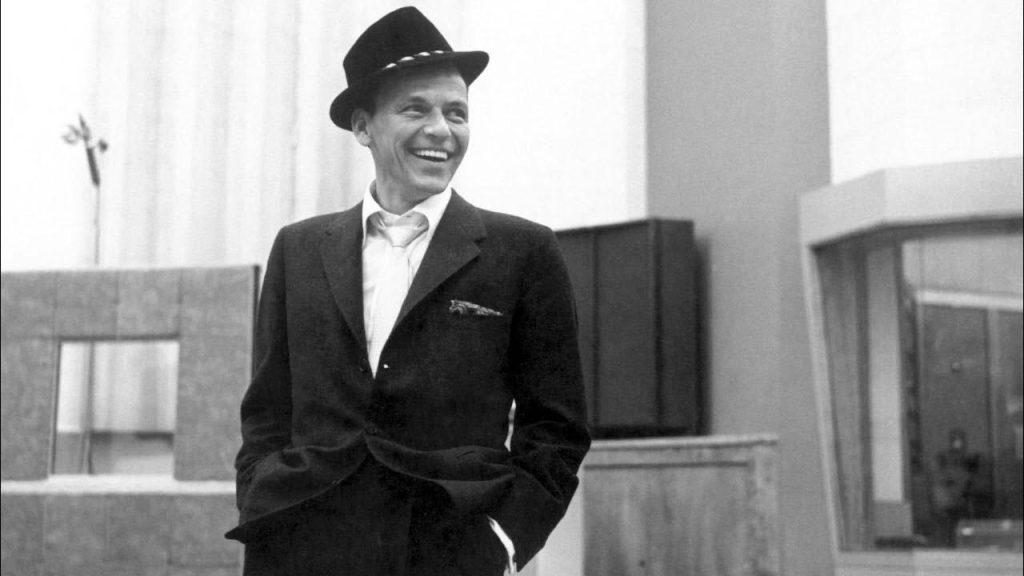
A Timeless Journey Through Love and Space
“Fly Me to the Moon,” performed by the legendary Frank Sinatra, is not just a song; it is an evocative journey through the cosmos of love and longing, one that resonates deeply with anyone who has ever dared to dream beyond the confines of their immediate reality. Released in 1964, this track quickly ascended the charts, capturing hearts worldwide and securing its place at number 18 on the Billboard Hot 100. But its impact went far beyond mere chart positions; it became an anthem for an era characterized by exploration and romance, both in the literal and metaphorical sense.
The story behind “Fly Me to the Moon” is as fascinating as its melody. Originally titled “In Other Words,” the song was penned by songwriter Bart Howard in 1954. It wasn’t until a decade later that Frank Sinatra, with his unmatched charisma and smooth baritone, transformed it into the quintessential version we cherish today. This rendition was part of his album “It Might as Well Be Swing,” a collaboration with the Count Basie Orchestra arranged by Quincy Jones. The album itself stands as a testament to Sinatra’s ability to blend jazz with popular music, creating a sound that was both timeless and contemporary.
The lyrics of “Fly Me to the Moon” are deceptively simple, yet they convey a profound sense of yearning and wonder. They invite the listener to imagine a love so powerful that it transcends earthly boundaries, taking us on a celestial voyage among the stars. This imagery of space travel was particularly poignant during the 1960s, an era marked by the Space Race and humanity’s quest to reach new frontiers. For many listeners, Sinatra’s voice became synonymous with this spirit of adventure, making “Fly Me to the Moon” an unofficial soundtrack for NASA’s Apollo missions. In fact, astronaut Buzz Aldrin played it during his historic moon landing in 1969, forever linking the song with one of humankind’s greatest achievements.
Beyond its historical context, “Fly Me to the Moon” resonates on a deeply personal level. It speaks to the universal desire to escape from the mundane and explore new horizons—whether those are emotional landscapes within ourselves or distant galaxies beyond our reach. For older generations, this song is a poignant reminder of youthful dreams and the boundless possibilities they once envisioned. Its lilting melody and heartfelt lyrics evoke memories of first loves, starlit nights, and the enduring hope that true love can lift us to unimaginable heights.
The enduring appeal of “Fly Me to the Moon” lies in its ability to evoke nostalgia while remaining eternally relevant. Each time Sinatra croons “In other words, hold my hand,” listeners are transported back to simpler times when emotions were raw and unfiltered. The gentle swing of Basie’s orchestra complements Sinatra’s voice perfectly, creating a soundscape that is both lush and intimate.
As we listen today, whether through vinyl crackles or digital streams, “Fly Me to the Moon” continues to enchant new generations while holding a special place in the hearts of those who first heard it decades ago. It serves as a timeless reminder that music has the power to transcend time and space, connecting us all through shared experiences and emotions.
In conclusion, Frank Sinatra’s “Fly Me to the Moon” is more than just a classic song; it’s an indelible part of cultural history that captures the essence of love’s boundless potential. Its legacy endures not only because of its beautiful composition but also due to its ability to inspire dreams and evoke cherished memories. Whether you’re a lifelong fan or discovering it anew, this iconic piece invites you to take flight on wings of melody and imagination—a journey that’s as exhilarating today as it was over half a century ago.